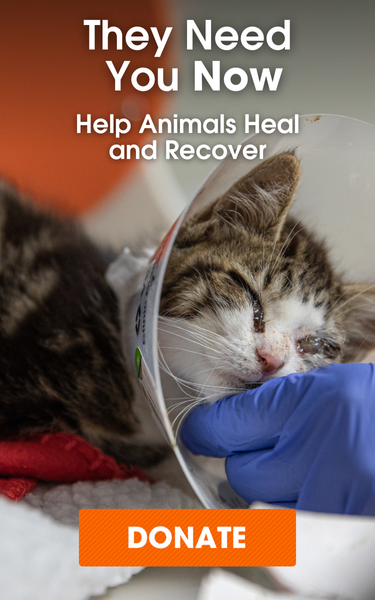
Destructive Scratching

Cats like to scratch. They scratch during play. They scratch while stretching. They scratch to mark territory or as a threatening signal other cats. And because cats’ claws need regular sharpening, cats scratch on things to remove frayed, worn outer claws and expose new, sharper claws. All this scratching can cause a lot of damage to furniture, drapes and carpeting!
What to Do About Your Cat’s Scratching Habits
The best tactic when dealing with scratching is not to try to stop your cat from scratching, but instead to teach her where and what to scratch. An excellent approach is to provide her with appropriate, cat-attractive surfaces and objects to scratch, such as scratching posts. The following steps will help you encourage your cat to scratch where you want her to:
Provide a variety of scratching posts with different qualities and surfaces. Try giving your cat posts made of cardboard, carpeting, wood, sisal and upholstery. Some cats prefer horizontal posts. Others might like vertical posts or slanted posts. Some prefer a vertical grain for raking, while others favor a horizontal grain for picking. Once you figure out your cat’s preference for scratching, provide additional posts of that kind in various locations. Keep in mind that all cats want a sturdy post that won’t shift or collapse when used. Most cats also like a post that’s tall enough that they can stretch fully. (This may be why cats seem to like drapes so much!)
Encourage your cat to investigate her posts by scenting them with catnip, hanging toys on them and placing them in areas where she’ll be inclined to climb on them.
Discourage inappropriate scratching by removing or covering other desirable objects. Turn speakers toward the wall. Put plastic, double-sided sticky tape, sandpaper or upside-down vinyl carpet runner (knobby parts up) on furniture or on the floor where your cat would stand to scratch your furniture. Place scratching posts next to these objects, as “legal” alternatives.
Clip your cat’s nails regularly. To learn how, please see the "Nail Care" section of our article, Cat Grooming Tips.
Consider putting plastic caps on your cat’s claws so that he’ll do no damage if he scratches on something in your home. These special caps attach to claws with an adhesive. They’re temporary, lasting four to six weeks.
If you catch your cat in the act of scratching an inappropriate object, you can try startling him by clapping your hands or squirting him with water. Use this procedure only as a last resort, because your cat may associate you with the startling event (clapping or squirting) and learn to fear you.
If you need help, don’t hesitate to call in the experts. Please see our article, Finding Professional Behavior Help, to locate a Certified Applied Animal Behaviorist (CAAB or ACAAB) or a board-certified veterinary behaviorist (Dip ACVB).
What NOT to Do
- Do not hold your cat by the scratching post and force her to drag her claws on it. This practice could seriously frighten your cat and teach her to avoid the scratching post completely. She might decide to avoid you, too!
- Do not throw away a favorite scratching post when it becomes unsightly. Cats prefer shredded and torn objects because they can really get their claws into the material. Used posts will also appeal to your cat because they smell and look familiar to her.
- The ASPCA is strongly opposed to declawing cats. Because declawing has not been proven an effective method for improving behavioral issues, including aggression toward people or other cats, it should never be used as a behavioral remedy or as a preventative measure. Click here to read the ASPCA’s complete Position Statement on Declawing Cats.
